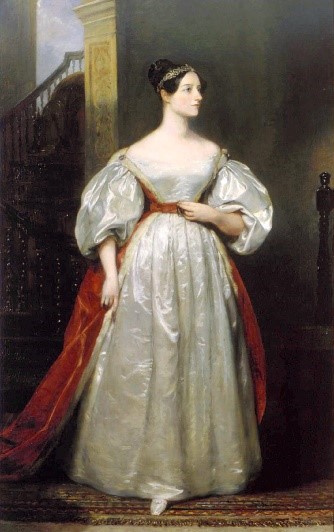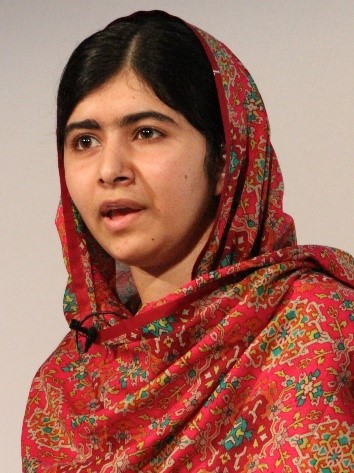
Happy Ada Lovelace Day - Celebrating Women in STEM
By Nathalie Smith | October 10, 2017
Today is Ada Lovelace Day, a day to celebrate the achievements of women in science, technology, engineering and mathematics (STEM).
I first became aware of this celebration three years ago by happenstance when a friend of mine simply asked, "Are you doing anything special on Ada Lovelace Day?" I wasn't - I had no idea who Ada Lovelace was and what Ada Lovelace Day was about. Wikipedia quickly filled in the blanks.
 Augusta Ada King, Countess of Lovelace (December 10, 1815 - November 27, 1852) was the only child of the poet Lord Byron and his wife Anne Isabella Byron. Byron separated from his wife a month after Ada was born and left England forever four months later. Ada's mother remained bitter at Lord Byron and promoted Ada's interest in mathematics and logic in an effort to prevent her from following in her father’s footsteps. Augusta Ada King, Countess of Lovelace (December 10, 1815 - November 27, 1852) was the only child of the poet Lord Byron and his wife Anne Isabella Byron. Byron separated from his wife a month after Ada was born and left England forever four months later. Ada's mother remained bitter at Lord Byron and promoted Ada's interest in mathematics and logic in an effort to prevent her from following in her father’s footsteps.
As a young adult, her mathematical talents led her to an ongoing working relationship and friendship with fellow British mathematician Charles Babbage, and Babbage’s work on the Analytical Engine. She wrote programs for the Analytical Engine, a general-purpose computing machine. She also wrote the very first description of a computer and of software. Ada Lovelace was one of the world's first computer programmers.
The Finding Ada website then told me all I needed to know about Ada Lovelace Day. Launched in Britain in 2009 as an international day of blogging to draw attention to women excelling in technology, it is celebrated the second Tuesday of October. Ada Lovelace Day aims to increase the profile of women in STEM and, in doing so, create new role models who will encourage more girls into STEM careers and support women already working in STEM. As women's contributions often go unacknowledged, their innovations seldom mentioned, and their faces rarely recognized, Ada Lovelace Day encourages all to tell the world about these unsung heroines.
I quickly determined that I had to do ‘something.’ My opportunity came in the form of a GeoDev meet-up which was taking place on Ada Lovelace Day at the 2014 NorthWest GIS conference I was attending in Lynnwood, WA. Conference organizers were looking for lightning talk speakers and I signed up to do a five minute talk on Celebrating Ada Lovelace. Beyond Ada herself, here are three of the women I highlighted then:
 Hedy Lamarr (November 9, 1914 – January 19, 2000) was an Austrian-born American actress and a star during MGM's "Golden Age." Did you know she was an inventor? She was the co-inventor, with composer George Antheil, of an early technique for spread spectrum communications and frequency hopping, which, upon its invention in 1941, was deemed so vital to national defense (as a method to disrupt the jamming of torpedoes) that government officials would not allow publication of its details. Lamarr's and Antheil's invention serves as a basis for modern spread-spectrum communication technology, such as Bluetooth, COFDM used in Wi-Fi network connections, and CDMA used in some cordless and wireless telephones. (*) Hedy Lamarr (November 9, 1914 – January 19, 2000) was an Austrian-born American actress and a star during MGM's "Golden Age." Did you know she was an inventor? She was the co-inventor, with composer George Antheil, of an early technique for spread spectrum communications and frequency hopping, which, upon its invention in 1941, was deemed so vital to national defense (as a method to disrupt the jamming of torpedoes) that government officials would not allow publication of its details. Lamarr's and Antheil's invention serves as a basis for modern spread-spectrum communication technology, such as Bluetooth, COFDM used in Wi-Fi network connections, and CDMA used in some cordless and wireless telephones. (*)
Lamarr wanted to join the National Inventors Council (NIC), but was reportedly told by NIC member Charles F. Kettering and others that she could better help the war effort by using her celebrity status to sell war bonds. Lamarr and Antheil were inducted into the Inventor's Hall of Fame in 2014.
 Real Admiral Grace Murray Hopper (December 9, 1906 – January 1, 1992) was an American computer scientist and United States Navy rear admiral. A pioneer in the field, she was one of the first programmers of the Harvard Mark I computer, and invented the first compiler for a computer programming language. She believed that computer code could be written in English by using a programming language that was based on English words. The compiler would convert that code into machine code that would be understood by computers. She popularized the idea of machine-independent programming languages, which led to the development of COBOL. She is credited with popularizing the term "debugging" for fixing computer glitches (inspired by an actual moth removed from the computer). (*) Real Admiral Grace Murray Hopper (December 9, 1906 – January 1, 1992) was an American computer scientist and United States Navy rear admiral. A pioneer in the field, she was one of the first programmers of the Harvard Mark I computer, and invented the first compiler for a computer programming language. She believed that computer code could be written in English by using a programming language that was based on English words. The compiler would convert that code into machine code that would be understood by computers. She popularized the idea of machine-independent programming languages, which led to the development of COBOL. She is credited with popularizing the term "debugging" for fixing computer glitches (inspired by an actual moth removed from the computer). (*)
 And finally, Malālah Yūsafzai (born July, 12 1997), the young Pakistani activist for female education. Her family ran a chain of schools in the Swat Valley of northwest Pakistan. In early 2009, aged 12, Yousafzai wrote a blog under a pseudonym for the BBC detailing her life under Taliban occupation, their attempts to take control of the valley, and her views on promoting education for girls in the Swat Valley. On the afternoon of October 9, 2012, Yousafzai boarded her school bus in the northwest Pakistani district of Swat. A gunman asked for her by name, then pointed a pistol at her and fired three shots. On October 10, 2014 (the day before my GeoDev meet-up presentation), Yousafzai was announced as the co-recipient of the 2014 Nobel Peace Prize for her struggle against the suppression of children and young people and for the right of all children to education (*) And finally, Malālah Yūsafzai (born July, 12 1997), the young Pakistani activist for female education. Her family ran a chain of schools in the Swat Valley of northwest Pakistan. In early 2009, aged 12, Yousafzai wrote a blog under a pseudonym for the BBC detailing her life under Taliban occupation, their attempts to take control of the valley, and her views on promoting education for girls in the Swat Valley. On the afternoon of October 9, 2012, Yousafzai boarded her school bus in the northwest Pakistani district of Swat. A gunman asked for her by name, then pointed a pistol at her and fired three shots. On October 10, 2014 (the day before my GeoDev meet-up presentation), Yousafzai was announced as the co-recipient of the 2014 Nobel Peace Prize for her struggle against the suppression of children and young people and for the right of all children to education (*)
These women and many others are pioneers and role models for girls and women in STEM. Their stories and the stories of many others inspire me daily and have reinforced my determination to somehow celebrate Ada Lovelace Day each year and also to try to spread the word beyond just the second Tuesday in October. My opportunity this year came in the form of this blog post (Thanks Molly Schar and NSGIC!).
So what are you doing to celebrate Ada Lovelace Day today or any other day for that matter? Here are a few ways you may want to participate:
- Support Girls who Code – their mission is to close the gender gap in technology.
- Become a Geomentor to improve GIS and geography education in the US for all.
- And, of course, become part of NSGIC's GeoWomen efforts to promote women's leadership in GIS and attract more women into GIS careers.
(*) Source material: Wikipedia
|